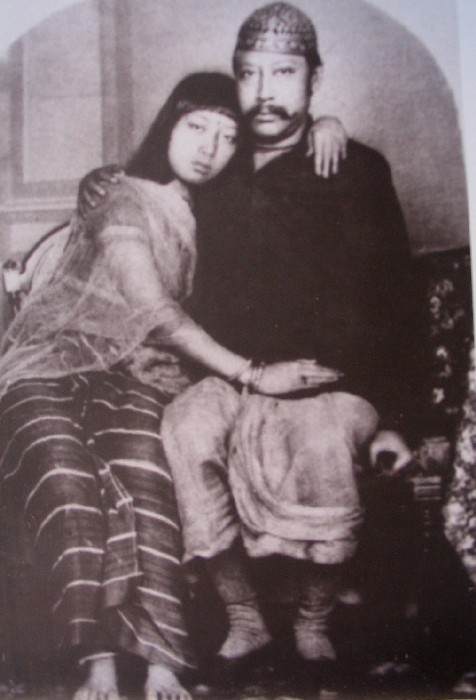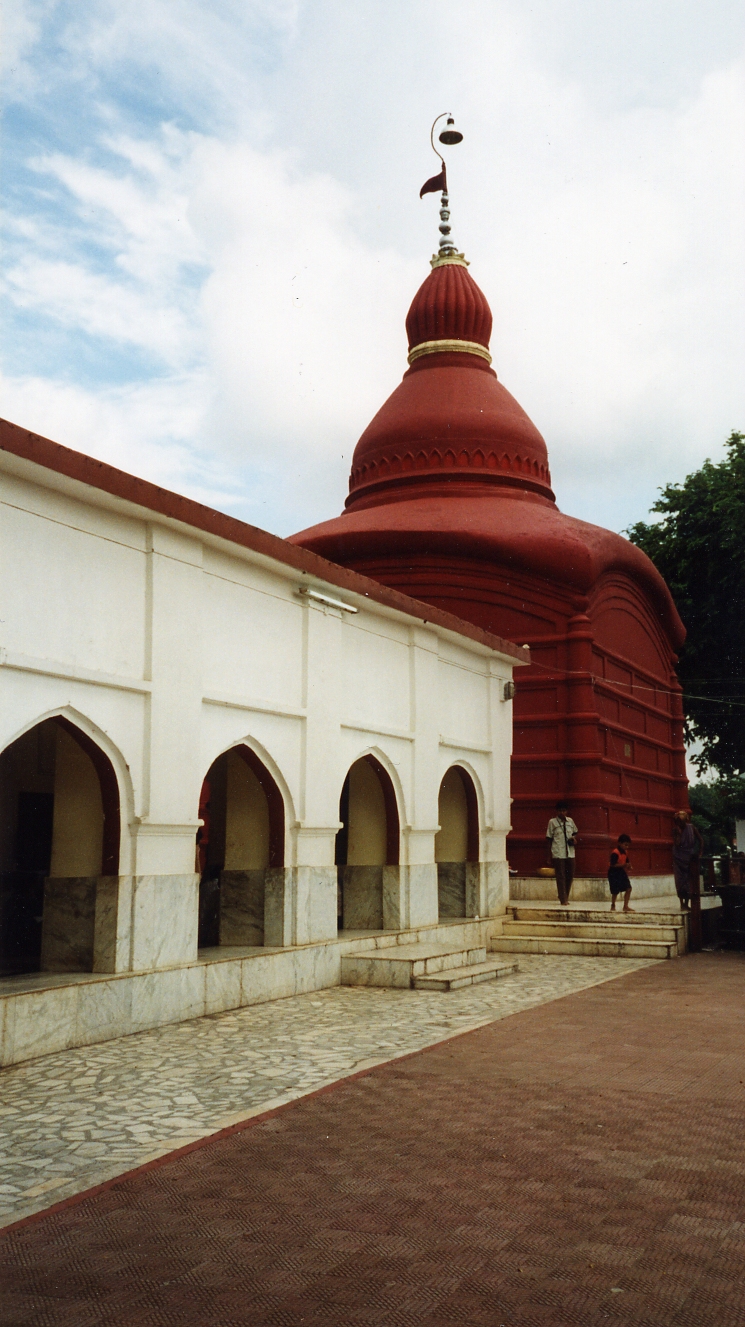|
Longtharai (film)
''Longtharai'' is a 1986 first Kokborok film directed by Dipak Bhattacharya, adapted from Tripura’s former Health and Urban Development Minister and CPIM leader Bimal Sinha’s novel "Karachi theke Longtharai". Production The 75-minute film's screenplay was created by Bhattacharya, who also directed it amid the intense political unrest that would engulf Tripura's hinterlands in the late 1980s. In the 1980s, shooting in celluloid with sync sound and color was a significant advance for aspiring filmmakers in Tripura. Only two prints of ''Longtharai'' were reportedly made, one of which is in the possession of the Government of Tripura, reportedly as a result of inadequate financial support and an exceedingly laborious post-production procedure during the celluloid era. See also * Kokborok Cinema * List of Kokborok-language films References Bibliography * Barma, Aloy Deb. Reading Contemporary Kokborok, and Bengali Films, and Music Videos: History, Technology, ... [...More Info...] [...Related Items...] OR: [Wikipedia] [Google] [Baidu] |
India
India, officially the Republic of India (Hindi: ), is a country in South Asia. It is the seventh-largest country by area, the second-most populous country, and the most populous democracy in the world. Bounded by the Indian Ocean on the south, the Arabian Sea on the southwest, and the Bay of Bengal on the southeast, it shares land borders with Pakistan to the west; China, Nepal, and Bhutan to the north; and Bangladesh and Myanmar to the east. In the Indian Ocean, India is in the vicinity of Sri Lanka and the Maldives; its Andaman and Nicobar Islands share a maritime border with Thailand, Myanmar, and Indonesia. Modern humans arrived on the Indian subcontinent from Africa no later than 55,000 years ago., "Y-Chromosome and Mt-DNA data support the colonization of South Asia by modern humans originating in Africa. ... Coalescence dates for most non-European populations average to between 73–55 ka.", "Modern human beings—''Homo sapiens''—originated in Africa. Then, int ... [...More Info...] [...Related Items...] OR: [Wikipedia] [Google] [Baidu] |
Kokborok
Kokborok (also known as Tripuri or Tiprakok) is the main native language of the Tripuri people of the Indian state of Tripura and neighbouring areas of Bangladesh. Its name comes from ''kok'' meaning "verbal" and ''borok'' meaning "people" or "human" and is one of the ancient languages of Northeast India. History Kokborok was formerly known as Tripuri & Tipra kok, with its name being changed in the 20th century. The names also refer to the inhabitants of the former Twipra kingdom, as well as the ethnicity of its speakers. Kókborok has been attested since at least the 1st century AD, when the historical record of Tripuri kings began to be written down. The script of Kókborok was called "Koloma". The Chronicle of the Tripuri kings were written in a book called the ''Rajratnakar''. This book was originally written down in Kókborok using the Koloma script by Durlobendra Chontai. Later, two Brahmins, Sukreswar and Vaneswar translated it into Sanskrit and then again translated ... [...More Info...] [...Related Items...] OR: [Wikipedia] [Google] [Baidu] |
Kokborok Cinema
Kokborok Cinema refers to the Kokborok language film industry in Tripura, India and among the Tripuri people. Tripura's Kokborok film industry began in 1986 with ''Longtharai'' (1986) directed by Dipak Bhattacharya adapted from Bimal Sinha's novel ''Karachi theke Longtharai'' depicting the struggle-ridden life of jhum cultivators in the rural hills of Longtharai followed by the Kokborok film '' Langmani Haduk'' (1993) directed by Ruhi Debbarma can be read as a critique of the modern regime. The Kokborok film ''Mathia'' (2004) directed by Joseph Pulinthanath, is the first International Award-winning Kokborok film. History Before it became a recognised form of artistic expression, cinema already existed in Tripura. Its predecessors, such as painting, sculpture, architecture, literature, music, dance, theatre, acrobatics, textiles, and photography, all contributed to the development of cinema. The relationship between film and the visual arts has existed for a very long time and ... [...More Info...] [...Related Items...] OR: [Wikipedia] [Google] [Baidu] |
Tripura
Tripura (, Bengali: ) is a state in Northeast India. The third-smallest state in the country, it covers ; and the seventh-least populous state with a population of 36.71 lakh ( 3.67 million). It is bordered by Assam and Mizoram to the east and by Bangladesh to the north, south and west. Tripura is divided into 8 districts and 23 sub-divisions, where Agartala is the capital and the largest city in the state. Tripura has 19 different tribal communities with a majority of the Bengali population. Bengali, English and Kokborok are the state's official languages. The area of modern Tripura — ruled for several centuries by the Manikya Dynasty — was part of the Tripuri Kingdom (also known as Hill Tippera). It became a princely state under the British Raj during its tenure, and acceded to independent India in 1947. It merged with India in 1949 and was designated as a 'Part C State' ( union territory). It became a full-fledged state of India in 1972. Tripura lies in a geographic ... [...More Info...] [...Related Items...] OR: [Wikipedia] [Google] [Baidu] |
Communist Party Of India (Marxist)
The Communist Party of India (Marxist) (abbreviated as CPI(M)/CPIM/CPM) is a Marxism–Leninism, Marxist–Leninist communist List of political parties in India, political party in India. It is the largest communist party of India in terms of membership and electoral seats and one of the List of political parties in India#National parties, national parties of India. The party emerged from a split in the Communist Party of India (CPI) on 7 November 1964. CPI(M) is a part of ruling alliances in three states — the Left Democratic Front (Kerala), Left Democratic Front in Kerala, Mahagathbandhan (Bihar), Mahagathbandhan in Bihar, and the Secular Progressive Alliance in Tamil Nadu. CPIM has representation in the legislative assemblies of 8 states. The All-India Party Congress is the supreme authority of the Communist Party of India (Marxist). However, during the time between two party congresses, the Central Committee is the highest decision-making body. The Central Committee ... [...More Info...] [...Related Items...] OR: [Wikipedia] [Google] [Baidu] |
Tribal Research And Cultural Institute
Tribal Research and Cultural Institute was established under Tribal Welfare Department in the year 1970 as per the decision of the Government of India. It is dedicated to conduct research on tribal issues and also evaluate the various programmes'/schemes' impact on the tribes residing in Tripura. Major activities * Research Studies * Tribal Language Development * Publication * Documentation works * Seminar/ Workshop/Training * Ethno-Cultural Museum * Library * Auditorium * Tripura State Academy of Tribal Culture * Associate Programme with Outside Institutes/Agencies * Promotion of Tribal Culture Wings * Research Wing * Publication Wing * Audio-Visual and Multi-Media Wing * Tribal Language Wing * Library * Museum * Auditorium * Tripura State Academy of Tribal Culture Tribes covered * Bhil * Bhutia * Chaimal * Chakma * Garo * Halam * Jamatia * Khashia * Kuki * Lepcha * Lushai * Mog * Munda * Noatia * Orang * Reang * Santal * Tripuri * Uchai Functions The prim ... [...More Info...] [...Related Items...] OR: [Wikipedia] [Google] [Baidu] |
Government Of Tripura
The Government of Tripura, also known as the State Government of Tripura, or locally as State Government, is the supreme governing authority of the Indian state of Tripura and its 8 districts. It consists of an executive, led by the Governor of Tripura, a judiciary and a legislative branch. Like other states in India, the head of state of Tripura is the Governor, appointed by the President of India on the advice of the Central government. His or her post is largely ceremonial. The Chief Minister is the head of government and is vested with most of the executive powers. Agartala is the capital of Tripura, and houses the Vidhan Sabha (Legislative Assembly) and the secretariat. The Tripura High Court, located in Agartala, Tripura exercises the jurisdiction and powers in respect of cases arising in the State of Tripura. The present Legislative Assembly of Tripura is unicameral, consisting of 60 Member of the Legislative Assembly A member of the Legislative Assembly (MLA) is a re ... [...More Info...] [...Related Items...] OR: [Wikipedia] [Google] [Baidu] |
List Of Kokborok-language Films
This is a list of Kokborok Cinema produced in the Kokborok language. Notable feature films: 1980s Notable feature films: 1990s Notable feature films: 20004-2009 Notable feature films: 2010-2018 Notable non-feature films: 2017-present References Further reading * Barma, Aloy Deb. Reading Contemporary Kokborok, and Bengali Films, and Music Videos: History, Technology, and Infrastructure. 2022. Jadavpur U. * Barma, Aloy Deb, and Prajapita Debroy. Cinema as Art and Popular Culture in Tripura: An Introduction. Vol. 1, Tribal Research and Cultural Institute, 2022. ISBN 978-81-958995-0-0. OL 44969662M. * Debroy, Prajapita. Is Tripuriness Endangered? Reading the Diffused Substance of Tripuri Indigeneity and Hybridity in Contemporary Kokborok Films against Bollywood in a Post-Globalization Era. 2023. Tripura U. {{DEFAULTSORT:Kokborok-language films Lists of films by language Indian film-related lists Films A film also called a movie, motion pict ... [...More Info...] [...Related Items...] OR: [Wikipedia] [Google] [Baidu] |
Cinema Of Tripura
Kokborok Cinema refers to the Kokborok language film industry in Tripura, India and among the Tripuri people. Tripura's Kokborok film industry began in 1986 with ''Longtharai'' (1986) directed by Dipak Bhattacharya adapted from Bimal Sinha's novel ''Karachi theke Longtharai'' depicting the struggle-ridden life of jhum cultivators in the rural hills of Longtharai followed by the Kokborok film '' Langmani Haduk'' (1993) directed by Ruhi Debbarma can be read as a critique of the modern regime. The Kokborok film ''Mathia'' (2004) directed by Joseph Pulinthanath, is the first International Award-winning Kokborok film. History Before it became a recognised form of artistic expression, cinema already existed in Tripura. Its predecessors, such as painting, sculpture, architecture, literature, music, dance, theatre, acrobatics, textiles, and photography, all contributed to the development of cinema. The relationship between film and the visual arts has existed for a very long tim ... [...More Info...] [...Related Items...] OR: [Wikipedia] [Google] [Baidu] |
Films Shot In Tripura
A film also called a movie, motion picture, moving picture, picture, photoplay or (slang) flick is a work of visual art that simulates experiences and otherwise communicates ideas, stories, perceptions, feelings, beauty, or atmosphere through the use of moving images. These images are generally accompanied by sound and, more rarely, other sensory stimulations. The word "cinema", short for cinematography, is often used to refer to filmmaking and the film industry, and to the art form that is the result of it. Recording and transmission of film The moving images of a film are created by photographing actual scenes with a motion-picture camera, by photographing drawings or miniature models using traditional animation techniques, by means of CGI and computer animation, or by a combination of some or all of these techniques, and other visual effects. Before the introduction of digital production, series of still images were recorded on a strip of chemically sensitized ... [...More Info...] [...Related Items...] OR: [Wikipedia] [Google] [Baidu] |
1986 Films
The year 1986 was designated as the International Year of Peace by the United Nations. Events January * January 1 ** Aruba gains increased autonomy from the Netherlands by separating from the Netherlands Antilles. **Spain and Portugal enter the European Community, which becomes the European Union in 1993. *January 11 – The Gateway Bridge in Brisbane, Australia, at this time the world's longest prestressed concrete free-cantilever bridge, is opened. * January 13– 24 – South Yemen Civil War. * January 20 – The United Kingdom and France announce plans to construct the Channel Tunnel. *January 24 – The Voyager 2 space probe makes its first encounter with Uranus. * January 25 – Yoweri Museveni's National Resistance Army Rebel group takes over Uganda after leading a five-year guerrilla war in which up to half a million people are believed to have been killed. They will later use January 26 as the official date to avoid a coincidence of dates with Dictator Idi Amin's ... [...More Info...] [...Related Items...] OR: [Wikipedia] [Google] [Baidu] |


